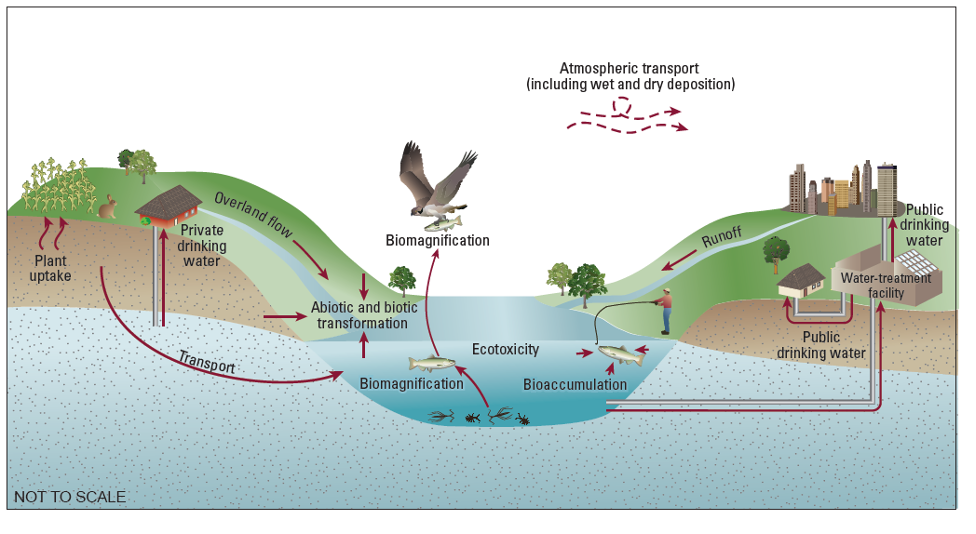Per- and polyfluoroalkyl substances (PFAS) have been manufactured and used in a variety of industries in the United States since the 1940s. PFAS are ubiquitous and persistent in the environment and have the potential to have adverse human and ecological health effects. There are more than 12,000 unique compounds, making analysis and reporting difficult. A STAC workshop gathered speakers from Chesapeake Bay jurisdictions, federal agencies, and academic institutions, including representatives from across the Nation, to better understand the state of the science, improve science coordination, and propose approaches to improve our knowledge of PFAS. The workshop was designed to (1) summarize current understanding of sources, occurrence, and fate of PFAS, (2) identify current efforts and approaches to inform the potential effects on fish and wildlife, and their consumption by humans, (3) consider study designs, and comparable sampling and analysis methods, for a more coordinated PFAS science effort, (4) determine and prioritize knowledge gaps, and (5) provide actionable scientific recommendations for monitoring and research.
This workshop report summarizes the current understanding of sources, occurrence, and fate of PFAS and identifies on-going efforts and approaches to inform the potential effects on fish and wildlife, and their consumption by humans. The report provides overarching guidance for research and monitoring to address science gaps, foster communication and collaboration, to help stakeholders better coordinate PFAS efforts to ensure data comparability across the entire Chesapeake Bay Watershed. Enhanced coordination among jurisdictions and agencies requires the creation of common study objectives to collect data and information based upon the media being sampled. This strategy could ensure the ability to conduct statistical analysis with “large” pooled data, allowing for a better understanding of PFAS occurrence, fate, transport, and source apportionment within the Bay and across the watershed. With the release of EPA Strategic Roadmap in 2021, the PFAS landscape is rapidly evolving. After the conclusion of the workshop, the EPA released an updated draft Method 1633 for approval and updated interim health advisories (HA’s) for perfluorooctanoate (PFOA), perfluorooctane sulfonate (PFOS), perfluorobutane (PFBS) and hexafluoropropylene oxide (HFPO) dimer acid and its ammonium salt (Gen X). Similarly, all guidance and science gaps identified in this report are rapidly evolving and should be reassessed periodically.
Ten science gaps were identified by workshop participants with six overarching actionable recommendations supporting at least one of the science gaps. The science gaps were ranked by need and binned into four categories designed to address data needs on 1) sources, fate, and occurrence more broadly across the watershed, 2) exposure and bioaccumulation across a range of species, 3) fish consumption advisories, and 4) ecological effects across a range of species, PFAS compounds and concentrations.

